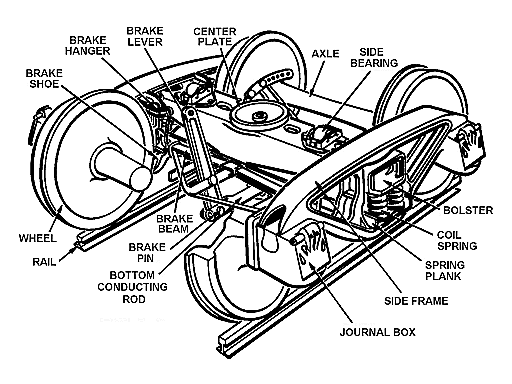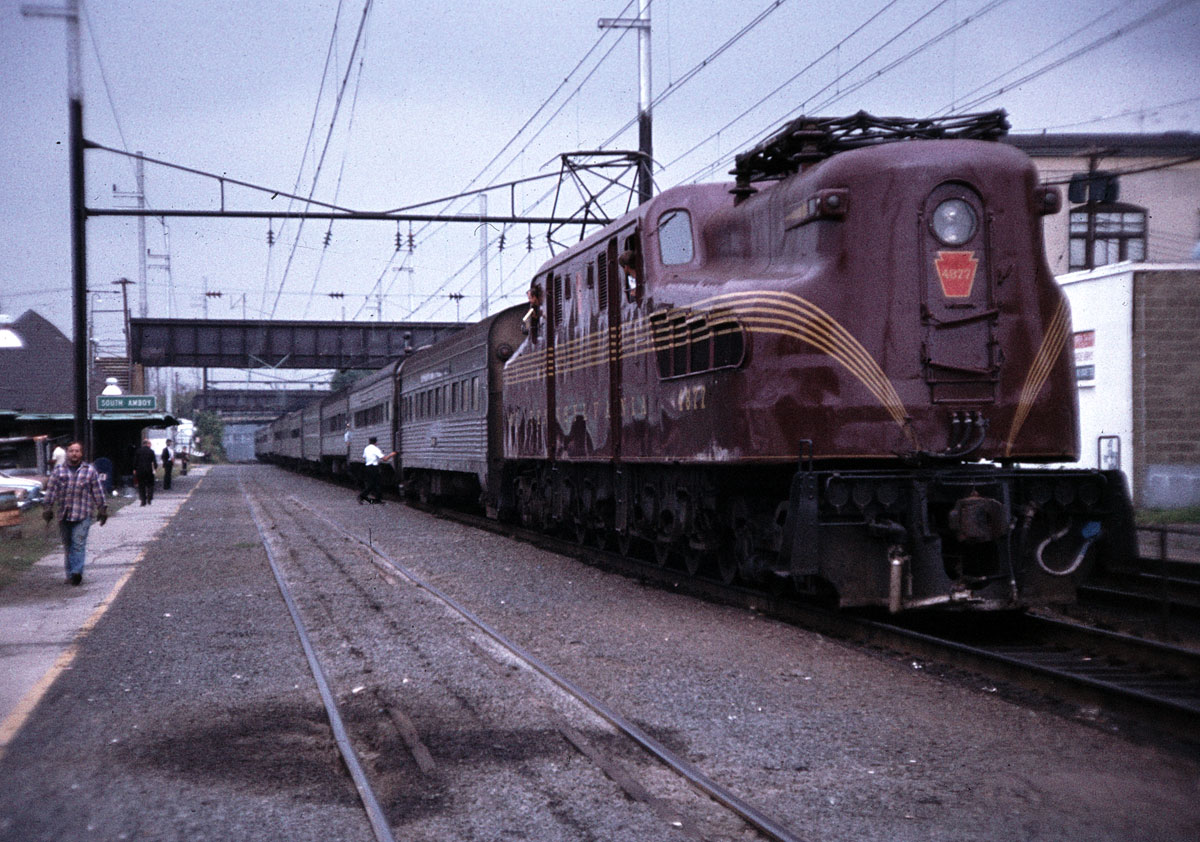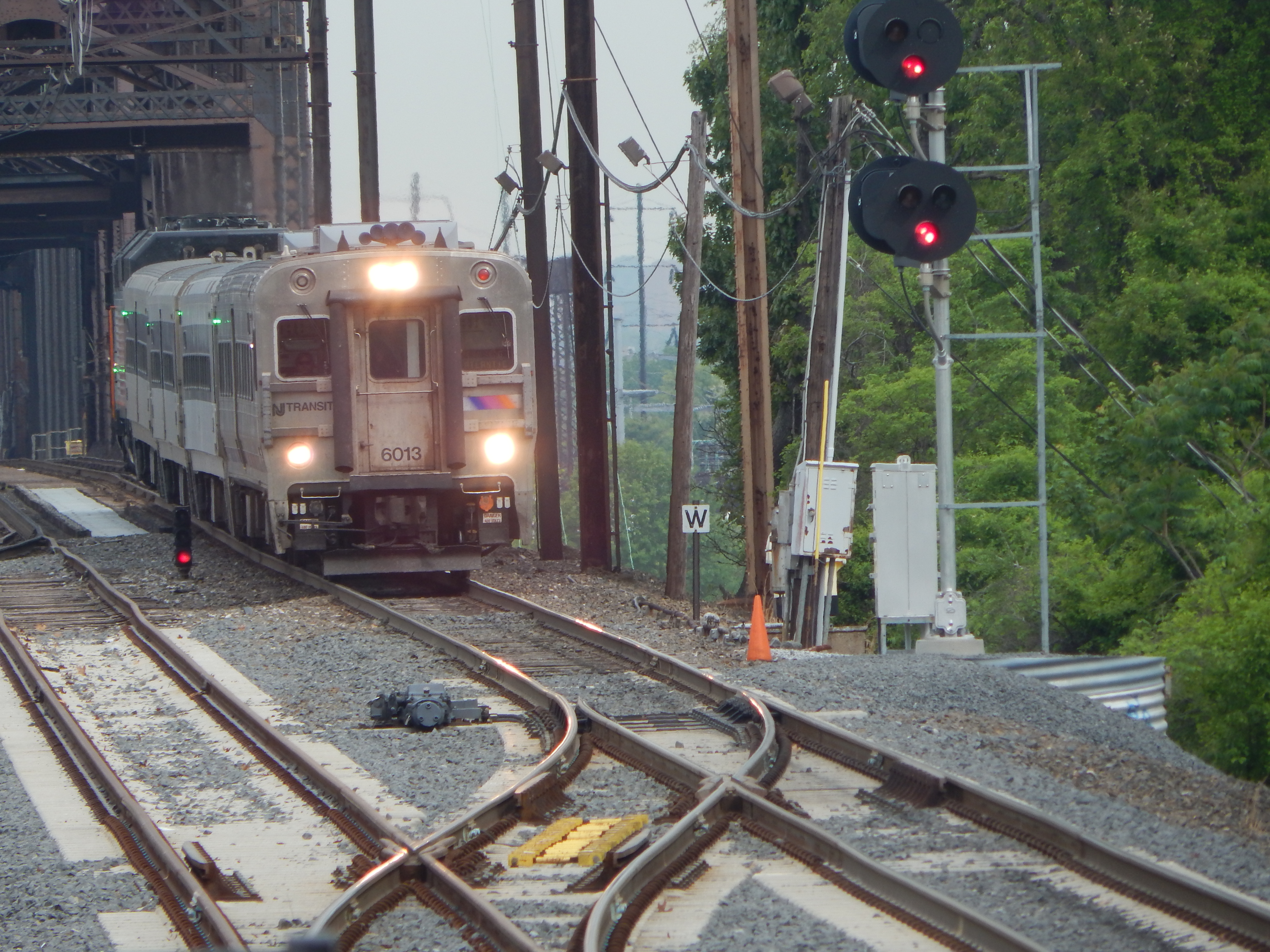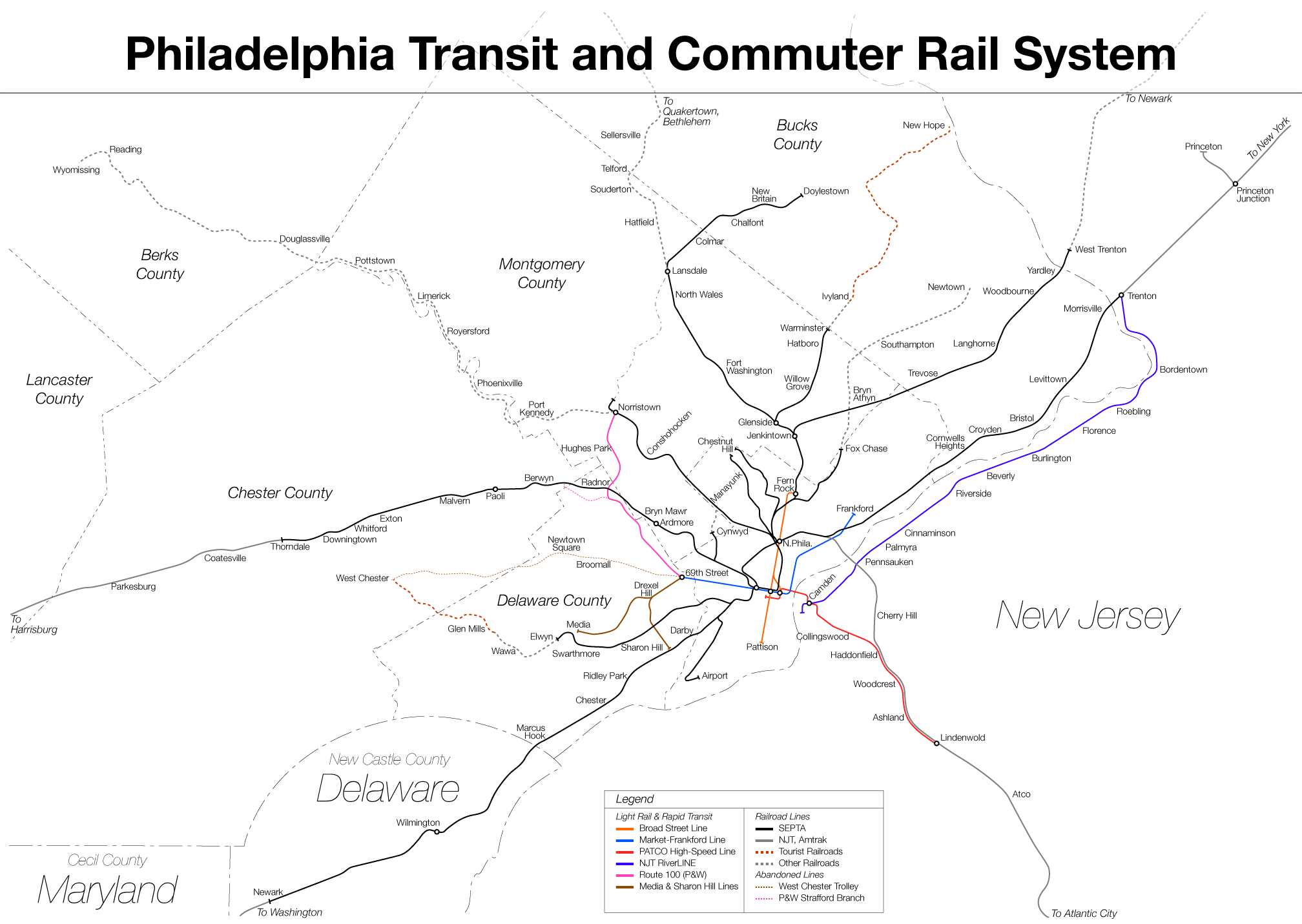|
Frankford Junction
Frankford Junction is a railroad junction, and former junction station, located on the border between the Harrowgate neighborhood of Philadelphia and Frankford, Philadelphia. At the junction, the 4-track Northeast Corridor line from Trenton connects with the 2-track Atlantic City Line from Atlantic City in the northeastern portion of Philadelphia about northeast of North Philadelphia station. It lies near the intersection of Frankford Avenue and Butler Street, to the west of the interchange between Interstate 95 and the approach to the Betsy Ross Bridge. It has been used for rail transportation since 1832 but has not served as a station since October 4, 1992. Overview The junction has seen a mass of freight and passenger service throughout its existence. In 1832 the Philadelphia and Trenton Railroad (P&T) was formed and started service with a small yard. The line extended southwest of the junction and on to destinations north. In 1871 the railroad was leased by the Penn ... [...More Info...] [...Related Items...] OR: [Wikipedia] [Google] [Baidu] |
Northeast Corridor
The Northeast Corridor (NEC) is an electrified railroad line in the Northeast megalopolis of the United States. Owned primarily by Amtrak, it runs from Boston through Providence, New Haven, Stamford, New York City, Philadelphia, Wilmington, and Baltimore to Washington, D.C. The NEC closely parallels Interstate 95 for most of its length, and is the busiest passenger rail line in the United States both by ridership and by service frequency as of 2013. The NEC carries more than 2,200 trains daily. The corridor is used by many Amtrak trains, including the high-speed Acela, intercity trains and several long-distance trains. Most of the corridor also has frequent commuter rail service, operated by the MBTA, Shore Line East, Hartford Line, Metro-North Railroad, Long Island Rail Road, New Jersey Transit, SEPTA and MARC. While large through freights have not run on the NEC since the early 1980s, several companies continue to run smaller local freights over some select few sec ... [...More Info...] [...Related Items...] OR: [Wikipedia] [Google] [Baidu] |
Penn Central
The Penn Central Transportation Company, commonly abbreviated to Penn Central, was an American class I railroad that operated from 1968 to 1976. Penn Central combined three traditional corporate rivals (the Pennsylvania, New York Central and the New York, New Haven and Hartford railroads), all united by heavy service into the New York metropolitan area and (to a lesser extent) New England and Chicago. The new company failed barely two years after formation, the largest bankruptcy in U.S. history at the time. The Penn Central's railroad assets were nationalized into Conrail along with the other bankrupt northeastern roads; its real estate and insurance holdings successfully reorganized into American Premier Underwriters. History Pre-merger The Penn Central railroad system developed in response to challenges facing northeastern American railroads during the late 1960s. While railroads elsewhere in North America drew revenues from long-distance shipments of commodities ... [...More Info...] [...Related Items...] OR: [Wikipedia] [Google] [Baidu] |
2015 Philadelphia Train Derailment
On May 12, 2015, an Amtrak ''Northeast Regional'' train from Washington, D.C. bound for New York City derailed and wrecked on the Northeast Corridor near the Kensington neighborhood of Philadelphia, Pennsylvania. Of 238 passengers and 5 crew on board, 8 were killed and over 200 injured, 11 critically. The train was traveling at in a zone of curved tracks when it derailed. Some of the passengers had to be extricated from the wrecked cars. Many of the passengers and local residents helped first responders during the rescue operation. Five local hospitals treated the injured. The derailment disrupted train service for several days. The National Transportation Safety Board determined that the derailment was caused by the train's engineer (driver) becoming distracted by other radio transmissions and losing situational awareness, and said that it would have been prevented by positive train control, a computerized speed-limiting system that was operational elsewhere on the Northeas ... [...More Info...] [...Related Items...] OR: [Wikipedia] [Google] [Baidu] |
Hot Box
A hot box is the term used when an axle bearing overheats on a piece of railway rolling stock. The term is derived from the journal-bearing trucks used before the mid-20th century. The axle bearings were housed in a box that used oil-soaked rags or cotton (collectively called "packing") to reduce the friction of the axle against the truck frame. When the oil leaked or dried out, the bearings overheated, often starting a fire that could destroy the entire railroad car (and cars coupled to it) if not detected early enough. The packing and bearing had to be regularly inspected by yard crews, and packing was often added at major stops. The journal bearing was replaceable, but if neglected, it would heat to a temperature where the babbitt bearing alloy would melt away, leaving the brass carrier riding on the steel axle, and result in a "taper journal". This would eventually lead to the axle fracturing and the car above falling onto the wheel, or failure of the taper journal, cau ... [...More Info...] [...Related Items...] OR: [Wikipedia] [Google] [Baidu] |
Frankford Junction Train Wreck
The Frankford Junction train wreck occurred on September 6, 1943, when Pennsylvania Railroad's premier train, the ''Congressional Limited'', crashed at Frankford Junction in the Kensington neighborhood of Philadelphia, Pennsylvania in the United States, killing 79 people and injuring 117 others. Train The ''Congressional Limited'' traveled between Washington D.C. and New York City, normally making one stop in Newark, New Jersey, covering the in 3½ hours at speeds up to , remarkable at the time. As it was the Labor Day Weekend in 1943, the company laid on 16-car trains to accommodate the expected high demand. At Washington's Union Station on Monday, September 6, 541 passengers boarded the 4 p.m. train, its 16 cars hauled by PRR GG1 electric locomotive number 4930,ICC Investigation No.2726 scheduled to travel nonstop to Pennsylvania Station, New York. [...More Info...] [...Related Items...] OR: [Wikipedia] [Google] [Baidu] |
Atlantic City Rail Terminal
The Atlantic City Rail Terminal is Atlantic City, New Jersey's train station, located inside of the Atlantic City Convention Center. It has five tracks served by three platforms and functions as the easternmost terminus of the NJ Transit Atlantic City Line to and from Philadelphia. The station was also served by the Atlantic City Express Service (ACES) from 2009 until it was formally discontinued on March 9, 2012. Construction of the station replaced the old Pennsylvania-Reading Seashore Lines Atlantic City station (née Atlantic City Union Station), which had become Atlantic City Bus Terminal and was demolished in 1997.Annotations to photographAtlantic City Union Station, 2121-2125 Arctic Avenue, Atlantic City, Atlantic County, NJ (Historic American Buildings Survey item NJ-1218). Available from the Library of Congress The Library of Congress (LOC) is the research library that officially serves the United States Congress and is the ''de facto'' national library of the ... [...More Info...] [...Related Items...] OR: [Wikipedia] [Google] [Baidu] |
30th Street Station
3 (three) is a number, numeral and digit. It is the natural number following 2 and preceding 4, and is the smallest odd prime number and the only prime preceding a square number. It has religious or cultural significance in many societies. Evolution of the Arabic digit The use of three lines to denote the number 3 occurred in many writing systems, including some (like Roman and Chinese numerals) that are still in use. That was also the original representation of 3 in the Brahmic (Indian) numerical notation, its earliest forms aligned vertically. However, during the Gupta Empire the sign was modified by the addition of a curve on each line. The Nāgarī script rotated the lines clockwise, so they appeared horizontally, and ended each line with a short downward stroke on the right. In cursive script, the three strokes were eventually connected to form a glyph resembling a with an additional stroke at the bottom: ३. The Indian digits spread to the Caliphate in the 9 ... [...More Info...] [...Related Items...] OR: [Wikipedia] [Google] [Baidu] |
New Jersey Transit
New Jersey Transit Corporation, branded as NJ Transit, and often shortened to NJT, is a state-owned public transportation system that serves the U.S. state of New Jersey, along with portions of New York State and Pennsylvania. It operates bus, light rail, and commuter rail services throughout the state, connecting to major commercial and employment centers both within the state and in the adjacent major cities of New York and Philadelphia. In , the system had a ridership of . Covering a service area of , NJT is the largest statewide public transit system and the third-largest provider of bus, rail, and light rail transit by ridership in the United States. NJT also acts as a purchasing agency for many private operators in the state; in particular, buses to serve routes not served by the transit agency. History NJT was founded on July 17, 1979, an offspring of the New Jersey Department of Transportation (NJDOT), mandated by the state government to address many then-pressi ... [...More Info...] [...Related Items...] OR: [Wikipedia] [Google] [Baidu] |
Delair Bridge
The Delair Bridge (officially the Delair Memorial Railroad Bridge) is a railroad bridge with a vertical-lift section that crosses the Delaware River between Philadelphia, Pennsylvania, and Pennsauken Township, New Jersey, just south of the Betsy Ross Bridge. The two-track bridge is part of Conrail Shared Assets Operations and is jointly used by Norfolk Southern Railway and CSX Transportation freight trains, as well as by the New Jersey Transit Atlantic City Line service. History The Delair Bridge, built by the Pennsylvania Railroad (PRR) in 1895–1896, was the first bridge of any sort between Philadelphia and New Jersey. The steel span connected PRR tracks in North Philadelphia to southern New Jersey. It consisted of three fixed Pennsylvania truss spans and a through-truss swing-span drawbridge totaling . Approach trestles of on the Pennsylvania side and on the New Jersey side bring its total length to . Starting in 1958, the PRR converted the bridge into a vertical-lift s ... [...More Info...] [...Related Items...] OR: [Wikipedia] [Google] [Baidu] |
Conrail Shared Assets Operations
Conrail Shared Assets Operations (CSAO) is the commonly used name for modern-day Conrail ( reporting mark CRCX), an American railroad company. It operates three networks, the North Jersey, South Jersey/Philadelphia, and Detroit Shared Assets Areas, where it serves as a contract local carrier and switching company for its owners, CSX Transportation and the Norfolk Southern Railway. When most of the former Conrail's track was split between these two railroads, the three shared assets areas (a total of about 1,200 miles of track) were kept separate to avoid giving one railroad an advantage in those areas. The company operates using its own employees and infrastructure but owns no equipment outside MOW equipment. North Jersey Shared Assets Area The North Jersey Shared Assets Area stretches from the North Bergen Yard in North Bergen, New Jersey south into Jersey City and Newark, and beyond to Manville (Port Reading Junction) and Trenton, much of which is operated over Amtrak's No ... [...More Info...] [...Related Items...] OR: [Wikipedia] [Google] [Baidu] |
Trenton Line (SEPTA)
The Trenton Line is a route of the SEPTA Regional Rail (commuter rail) system. The route serves the northeastern suburbs of Philadelphia, Pennsylvania with service in Bucks County along the Delaware River to Trenton, New Jersey. Route Trenton Line trains operate along a four-track line from 30th Street Station via the Philadelphia Zoo (without stopping there), to North Philadelphia, before running parallel to I-95 and then US 13 for several miles. It crosses the Delaware River at Trenton, New Jersey before making its final stop at Trenton Transit Center, which is also served by Amtrak and New Jersey Transit trains. The route is part of the middle leg of Amtrak's Northeast Corridor; all 11 of Amtrak's Northeast Corridor services run along this line. The line's termini, 30th Street and Trenton Transit Center, have long been among the busiest Amtrak stations in the country. On weekdays, Amtrak connections are also available at North Philadelphia and Cornwells Heights. Connecting Tre ... [...More Info...] [...Related Items...] OR: [Wikipedia] [Google] [Baidu] |
Southeastern Pennsylvania Transportation Authority
The Southeastern Pennsylvania Transportation Authority (SEPTA) is a regional public transportation authority that operates bus, rapid transit, commuter rail, light rail, and electric trolleybus services for nearly 4 million people in five counties in and around Philadelphia, Pennsylvania. It also manages projects that maintain, replace and expand its infrastructure, facilities and vehicles. SEPTA is the major transit provider for Philadelphia and the counties of Delaware, Montgomery, Bucks, and Chester. It is a state-created authority, with the majority of its board appointed by the five Pennsylvania counties it serves. While several SEPTA commuter rail lines terminate in the nearby states of Delaware and New Jersey, additional service to Philadelphia from those states is provided by other agencies: the PATCO Speedline from Camden County, New Jersey is run by the Delaware River Port Authority, a bi-state agency; NJ Transit operates many bus lines and a commuter rail line to ... [...More Info...] [...Related Items...] OR: [Wikipedia] [Google] [Baidu] |





